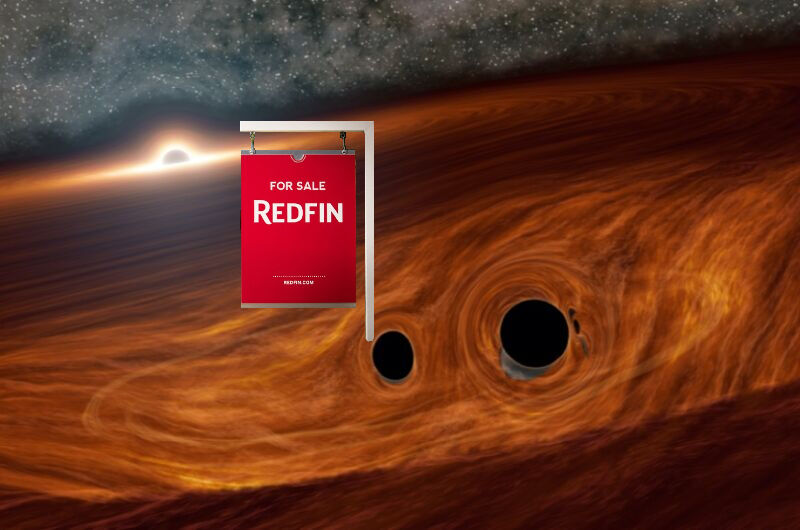A guide to living at a black hole

Enlarge / Even with today's real estate boom, a supermassive black hole in the neighborhood has to drive the asking price down a bit, right? (credit: Caltech/R. Hurt (IPAC) / Redfin / Nathan Mattise)
Black holes flood the Universe. The nearest one is a mere 1,500 lightyears away. A giant one, Sagittarius A*, sits in the center of the Milky Way about 25,000 lightyears away. While your typical space traveler might look for a home around a calm G-type star, some celestial citizens are brave enough to take up refuge around one of these monsters. It's not an easy life, that's for sure, but being neighbors with a black hole does mean you'll almost certainly learn more about the fundamental nature of reality than anybody else.
Interested? What follows is a guide of what to expect should you make your home around a black hole. Good luck.
Black hole basicsUpon first arriving at a black hole, you will most likely be struck by how utterly, completely...boring it is. The black hole itself is simply a fathomless black orb hanging out somewhere in the distance. Black holes don't really do anything except sit there and gravitate. In fact, they're famously easy to miss: Unless they're actively feeding on material or coincidentally bending/blocking the view to a star in the background, you simply can't see them. Once you know one is there, though, you can start to have some fun.
Read 37 remaining paragraphs | Comments